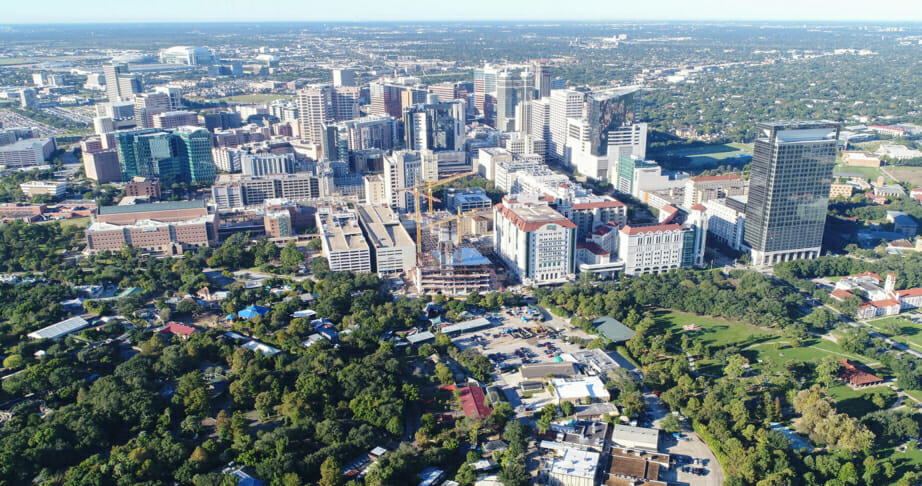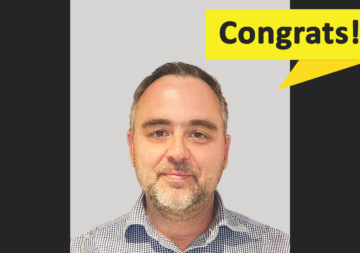
27 November 2019
Thinking Healthcare Beyond Healing
Isabelle Mansour is a Health Planner in TSA’s Sydney office. Her Bachelor of Nursing Sciences and Masters in Health Services Management, combined with her health experience give her an expert understanding of health facility planning. Isabelle is currently working on the $780 million John Hunter Health and Innovation Precinct for Health Infrastructure NSW.
Last month, I had the pleasure of attending the 2019 Asia Pacific Health Leadership Congress on the Gold Coast. The congress offered me an opportunity to network with healthcare leaders and further explore some of the hottest health facility planning topics related to sustainability, innovation and integration in healthcare design. Being involved in several hospital development projects, I perceive these topics as shaping discussions between the multiple stakeholders, particularly during the planning process. Below is a summary of the presentations that I took a lot away from and thought would be valuable to share.
The Rise of Health, Education and Research Innovation Precincts
Professor David Allison, Director of Graduate Studies in Architecture and Health School of Architecture at Clemson University School of Health Research (U.S.A) described how several health precincts around the globe have transformed into an agglomeration of businesses clustered in specific geographic areas to match skills, collaborate, and share knowledge and resources in a cost-effective way.
During his session, Professor Allison demonstrated how globally, the United States, Barcelona, Berlin, London, Medellin, Montreal, Seoul, Stockholm and Toronto have also developed examples of similar evolving districts. Giving the case study of the Texas Medical Centre in the United States – now with more than 14 hospitals, six nursing schools and three medical schools, this Centre is leaving a large footprint in the Houston healthcare market. Described as a city within a city, the Texas Medical Centre is a conglomeration of healthcare providers, researchers, educators, retailers, overnight accommodation and support services that aim to offer people from all walks of life access to the best holistic healthcare, education and research services.
A local example is the NSW Liverpool city centre, which is already comprised of several substantial and innovative organisations and facilities. Including, Liverpool Hospital, Ingham Institute of Applied Medical Research (a clinical skills and simulation centre), the clinical schools of the University of NSW and Western Sydney University, Sydney South West Private Hospital, and TAFE NSW. Liverpool has the aspiration of an innovation precinct with future development aiming to maximise the potential of the existing local organisations and to provide an environment ripe for new and innovative investment.
Unsurprisingly, there is a global interest expressed by governments, businesses and research institutions in developing and fostering innovation precincts. The growing interest is mainly due to the outsized contribution to the economy that the innovation precincts offer in addition to facilitating collaboration and knowledge flows between industries and delivering comprehensive care to the community.
Improving Economical Sustainability in the Healthcare Sector
Professor Rhonda Kerr, Principal Health Facilities Planner at Hames Sharley Architects and Planners talked through the importance of incorporating innovation as a key to effective and economically sustainable acute care. The session offered the opportunity to reflect on the concept of value-based care as a cornerstone for the sustainability of health expenditure. Value-based care is a concept that requires a significant shift in mindset, creating systems that reward healthcare providers for the quality of care delivered instead of the current drivers that reward the volume of care provided.
Further reading on the topic has confirmed for me how scantily the value-based concept is being applied to healthcare innovation and models of care. We need to reconsider the way healthcare is funded, which should ideally be through a system based on integrated models that provide measurably better clinical outcomes and vastly improved patient experience, at a lower cost. In the Australian context, this would require identifying and building relationships with community organisations that address the holistic aspects of patient wellbeing, including housing, social supports, education and psychological wellness. There would need to be a particular focus on Aboriginal and Torres Strait Islander communities, elderly residential care contexts and mental health patient cohorts.
I left the congress with some great learnings and food for thought to reflect upon and research. Beyond healing, how do we better integrate a medical campus within the public community? How do we operationalise the precinct to capture the right anchor tenants, the appropriate stakeholders to deliver the required services, the investment to ensure that the city is connected, and the human talent desired to sustain the precinct?
Beyond healing, how in practice do we redesign a fragmented health system to operate in a more coordinated and innovative model, deliver comprehensive care and superior health outcomes to the community while reducing costs? Part of the answer and a common theme connecting the congress major topics is the importance of achieving the right strategic partnerships; coupled with an effective change management approach to redesign the ways in which existing processes, workforce and systems are organised and overcome the obstacles resulting from legacy systems and the long-established status quo.
If you’d like to get in touch with Isabel or our health planning team send us an email.


